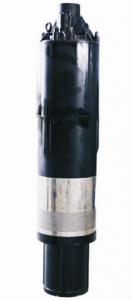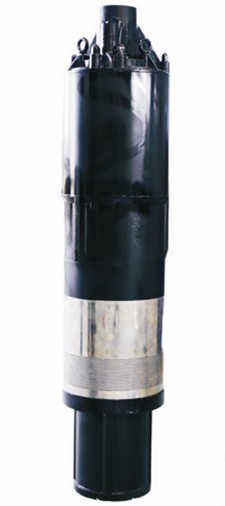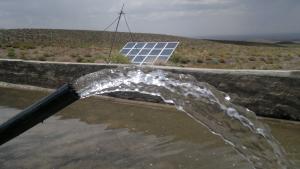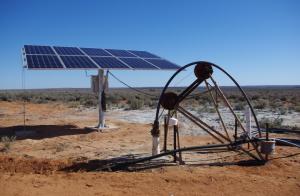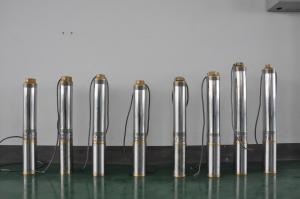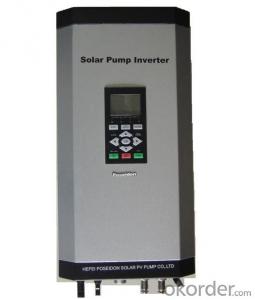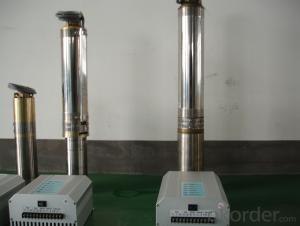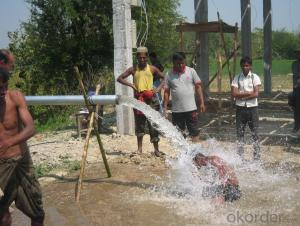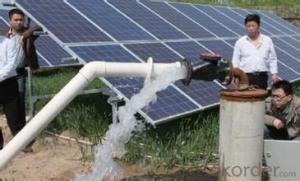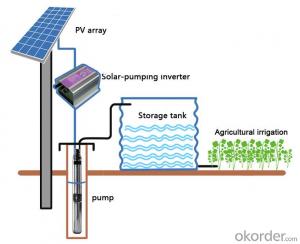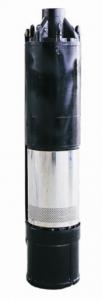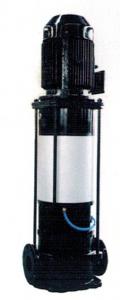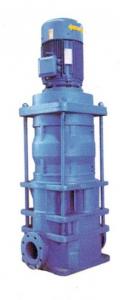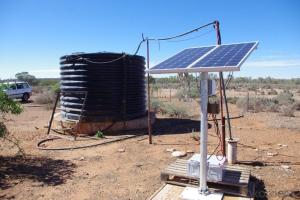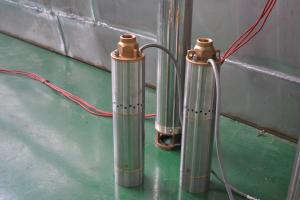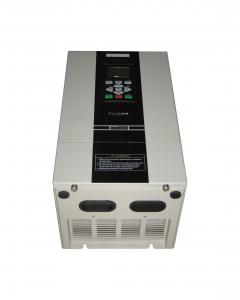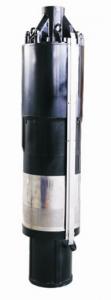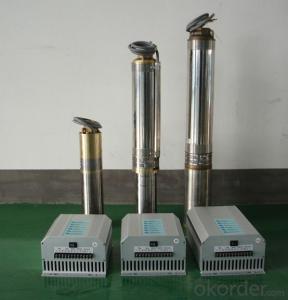Lorentz Solar Pump 3DS-10-100
- Loading Port:
- China Main Port
- Payment Terms:
- TT OR LC
- Min Order Qty:
- -
- Supply Capability:
- 300 sets /month
OKorder Service Pledge
OKorder Financial Service
You Might Also Like
Product description:
Product: Solar water pump
Model:3DS-10
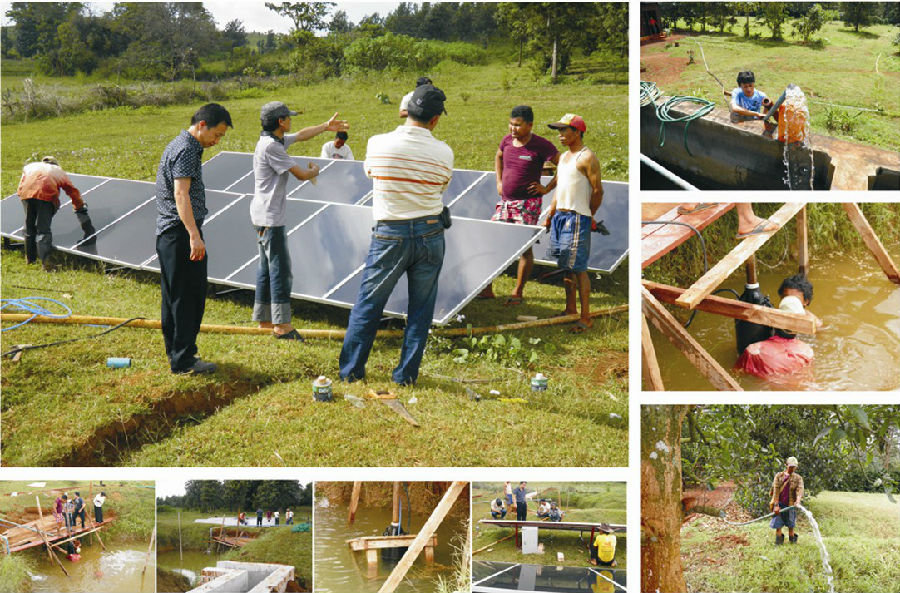 Appilication:
Appilication:
submersible pump
for deep well or water tank or pond or small lake
for irrigation of a farm cover around 5000 m2
For all kinds of irrigation: flood /sprinkling/ drip
Product specification:
flow rate:4000 liter/ hour, 32m3/day.
lift: 50m-100m
pump diameter: 238mm
well diameter more than 250mm
with BLDC motor, motor power:2000W
but only need solar power:960W, our pump can save more than 50% solar panel power.
Material:
Pump inside: stainless steel and wearable nylon,it enables our solar pump to have 10 years sevice life.
Motor length:30cm,80% shorter than other motors. So that you can pump 80% more water by our solar pump.
Certification:
3 International patent
ISO9001
CE
Warranty:2 years
- Q: Does a solar pump require a battery backup?
- No, a solar pump does not require a battery backup. It operates directly using the energy generated from sunlight, eliminating the need for additional power storage.
- Q: Can solar pumps be used for water supply in agricultural cooperatives or farming communities?
- Yes, solar pumps can be effectively used for water supply in agricultural cooperatives or farming communities. Solar pumps are a sustainable and cost-effective solution as they utilize solar energy to power the pumps, eliminating the need for electricity or fossil fuels. They can provide a reliable source of water for irrigation, livestock, and other agricultural needs, helping to improve crop yields and overall productivity in these communities. Additionally, solar pumps require minimal maintenance and have a long lifespan, making them suitable for remote and off-grid areas.
- Q: Can solar pumps be used for water supply in schools or orphanages in developing countries?
- Yes, solar pumps can indeed be used for water supply in schools or orphanages in developing countries. Solar pumps are an excellent solution for areas with limited access to electricity or unreliable power supply. They provide a sustainable and cost-effective way to extract and distribute water, ensuring a reliable water source for drinking, sanitation, and other essential needs in schools and orphanages. Additionally, solar pumps require minimal maintenance and have a long lifespan, making them suitable for remote and resource-constrained regions.
- Q: How do solar pumps handle water with low pH or chemical contamination?
- Solar pumps generally do not have specific mechanisms to handle water with low pH or chemical contamination. However, the materials used in the construction of solar pumps are often corrosion-resistant, which helps mitigate the effects of low pH or chemical contamination. Additionally, in cases of severe chemical contamination or low pH, pre-treatment methods such as filtration or chemical neutralization may be required before the water is pumped using a solar pump.
- Q: How much water can a solar pump deliver in a day?
- The amount of water a solar pump can deliver in a day depends on various factors such as the size and capacity of the pump, the amount of sunlight available, and the specific requirements of the application. Generally, solar pumps can deliver anywhere from a few hundred liters to several thousand liters of water per day.
- Q: How does the cost of operating a solar pump compare to a traditional pump?
- The cost of operating a solar pump is generally lower compared to a traditional pump. Solar pumps use renewable energy from the sun to power their operations, which eliminates the need for electricity or fuel consumption. As a result, there are no ongoing energy costs associated with operating a solar pump. In contrast, traditional pumps rely on electricity or fuel, which can be expensive and subject to price fluctuations. Additionally, solar pumps require minimal maintenance and have a longer lifespan, reducing the overall operating costs in the long run.
- Q: What is the payback period for installing a solar pump system?
- The payback period for installing a solar pump system varies depending on various factors such as the initial cost of the system, the amount of energy savings achieved, and any incentives or subsidies available. Generally, the payback period for a solar pump system can range from 3 to 8 years. One of the primary factors influencing the payback period is the initial cost of the system. Solar pump systems can vary in price depending on the size and capacity of the system. It is important to consider the upfront investment required and compare it with the potential energy savings over time. Another crucial factor is the amount of energy savings achieved by using a solar pump system. Solar pumps utilize renewable energy from the sun, which eliminates the need for traditional energy sources such as electricity or fuel. This can result in significant energy cost savings over the lifetime of the system. Additionally, incentives and subsidies offered by government or utility companies can also impact the payback period. Many regions provide financial incentives or tax credits for installing solar pump systems, which can help offset the initial investment and shorten the payback period. Overall, it is recommended to assess the specific costs, energy savings, and available incentives in your area to determine a more accurate payback period for installing a solar pump system. Consulting with a solar energy professional can also provide valuable insights and help you make an informed decision.
- Q: What is the maximum size of pipe that a solar pump can handle?
- The size of pipe that a solar pump can handle is determined by several factors, including the pump's capacity and power, as well as the specific water system requirements. Usually, solar pumps are built to accommodate pipe sizes ranging from 1 inch to 4 inches in diameter. Nonetheless, it is crucial to refer to the manufacturer's specifications and guidelines in order to ascertain the maximum pipe size that a specific solar pump can effectively handle. Moreover, factors like the total dynamic head (TDH) and flow rate requirements of the water system should be taken into account to guarantee optimal performance and efficiency of the solar pump.
- Q: What is the cost of installing a solar pump system?
- There are several factors that can influence the cost of installing a solar pump system. These factors encompass the pump's size and capacity, the complexity of the installation, and the location. On average, the installation expense for a solar pump system falls within the range of $3,000 to $10,000. However, it is crucial to acknowledge that this amount represents solely the initial installation cost, and there might be additional charges for maintenance and repairs in the long term. Moreover, certain regions may offer government incentives and rebates that can help mitigate the installation cost. To obtain an accurate cost estimate that is tailored to your requirements and location, it is advisable to seek guidance from a professional installer.
- Q: What are the government incentives available for installing a solar pump?
- Government incentives available for installing a solar pump may vary depending on the country or region. However, some common incentives include financial subsidies, tax credits, grants, and low-interest loans. These incentives aim to promote the adoption of solar energy and help offset the initial costs of installing a solar pump system. Additionally, some governments may also offer net metering programs, where excess electricity generated by the solar pump can be sold back to the grid, further incentivizing the installation of such systems.
Send your message to us
Lorentz Solar Pump 3DS-10-100
- Loading Port:
- China Main Port
- Payment Terms:
- TT OR LC
- Min Order Qty:
- -
- Supply Capability:
- 300 sets /month
OKorder Service Pledge
OKorder Financial Service
Similar products
Hot products
Hot Searches
Related keywords
